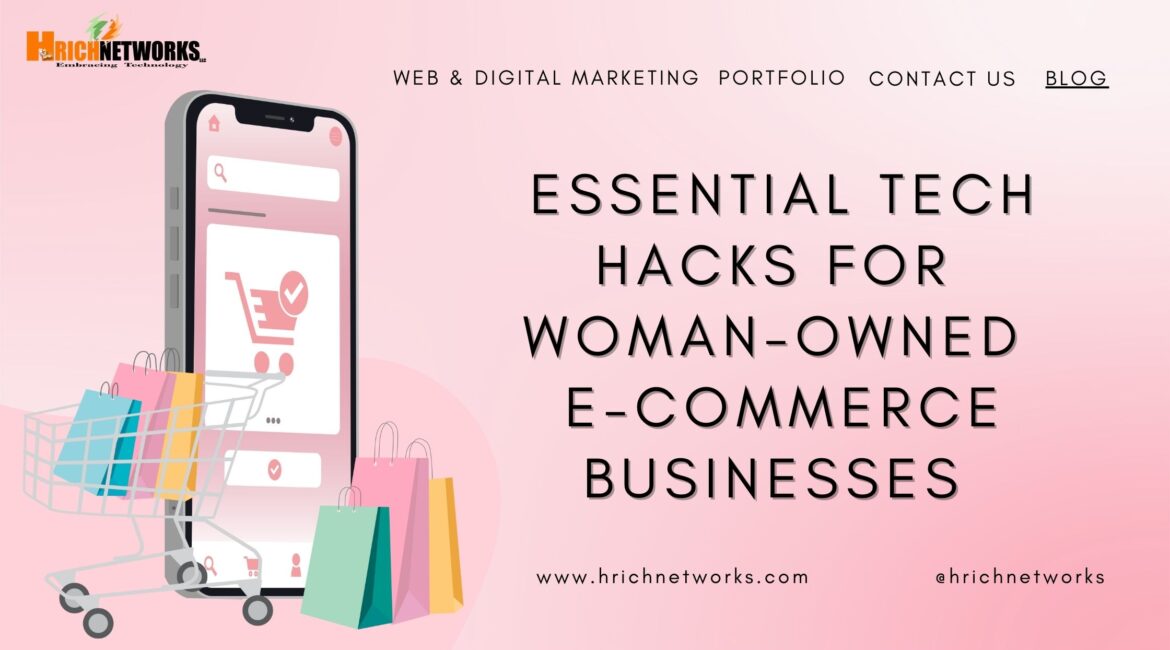Running a women-owned e-commerce business is exciting, but let’s be real—it can also be overwhelming. Between marketing, inventory management, and customer retention, there’s always something demanding your attention. The right e-commerce technology can help you streamline operations, increase sales, and boost productivity.
If you’re a female entrepreneur selling handmade products, fashion, beauty, home goods, or digital products, these practical, real-life tech tips will help you save time, optimize your online store, and grow your brand this April.
1. Automate Tasks to Free Up Your Time
Managing an online business means juggling multiple roles. Marketing automation tools can handle repetitive work so you can focus on scaling your brand.
- Example: Emma, founder of a handmade soap business, struggled with keeping up with Instagram and TikTok posts. She now uses Later to schedule content, and Canva to creates branded templates, saving her 10+ hours per month.
- Try this: Use Shopify Flow (if you’re on Shopify) to automate order tracking, customer emails, and stock updates.
Other time-saving automation tools:✔ Klaviyo or Mailchimp for email marketing automation✔ Tidio or Gorgias to set up an AI chatbot for customer support✔ Zapier to integrate apps and create automated workflows
2. Strengthen Cybersecurity to Protect Your Store
As a small business owner, protecting your e-commerce website from cyber threats is crucial. A single data breach could cost you customer trust and revenue.
- Example: Maria, who sells personalized gifts, had her Shopify store hacked due to a weak password. Now, she uses a Password and has enabled two-factor authentication (2FA) for extra security.
- Try this: Secure your store with SSL encryption and use a trusted payment processor like Stripe or PayPal.
Other cybersecurity must-haves:✔ Cloud backups with Google Drive or Dropbox✔ Fraud detection tools like Signifyd to prevent chargebacks✔ Regular software updates to patch security vulnerabilities
3. Use AI to Improve Customer Experience & Boost Sales
AI-powered tools can help you personalize shopping experiences, improve marketing, and increase conversions.
- Example: Olivia, founder of an organic skincare line, noticed customers abandoning carts before checkout. She added an AI-powered chatbot, Recart, to send abandoned cart reminders via Facebook Messenger—resulting in a 25% increase in recovered sales.
- Try this: Add a product recommendation engine(like LimeSpot or Rebuy) to your website to offer personalized product suggestions based on browsing history.
Other AI-powered tools:✔ Chatbots (Tidio, Drift) for instant customer support✔ Jasper AI or Grammarly for SEO-friendly product descriptions✔ Google Analytics with AI insight to track customer behavior
4. Optimize Your Online Store for Higher Conversions
A fast, mobile-friendly, and user-friendly website is essential for e-commerce success.
- Example: Sophie, who runs a boutique clothing brand, saw a drop in mobile traffic sales. She optimized her site for mobile, added a Buy Now button, and introduced one-click checkout options—leading to a 20% boost in mobile sales.
- Try this: Test your site’s performance with Google PageSpeed Insights and optimize slow pages.
Other e-commerce optimizations:✔ Use SEO tools (Ubersuggest, Ahrefs) to rank higher in Google search results✔ Offer multiple payment options (Apple Pay, Klarna, PayPal) to reduce cart abandonment✔ Add customer reviews to build trust and improve conversion rates
5. Simplify Finances with Smart Fintech Tools
Managing e-commerce finances can be easy with digital payment solutions and automated bookkeeping.
- Example: Sarah, who runs an Etsy print shop, struggled with tracking revenue and expenses. She switched to Wave Accounting, which automatically logs transactions and categorizes expenses—making tax season stress-free.
- Try this: Set up Shopify Capital (if eligible) to access business funding without a traditional bank loan.
Other fintech tools:✔ QuickBooks for e-commerce bookkeeping✔ Expensify to track business expenses✔ Square or PayPal Zettle for in-person sales at pop-up shops or markets
6. Network & Collaborate to Grow Your Brand
Building relationships with other women entrepreneurs and e-commerce leaders can open doors to brand collaborations, mentorship, and business growth.
- Example: Lauren, who sells sustainable handbags, joined a Facebook group for women-owned businesses and landed a brand collaboration with an eco-friendly influencer, boosting sales by 30%.
- Try this: Join LinkedIn or Facebook groups like “Women in E-Commerce” to connect with like-minded business owners.
Other networking ideas:✔ Attend virtual events and Shopify webinars✔ Use Calendly to schedule business calls✔ Partner with other brands for cross-promotions and giveaways
Final Thoughts
Technology is a powerful tool for women-owned e-commerce businesses. Whether you’re looking to boost online sales, improve cybersecurity, automate marketing, or streamline finances, the right tech can help you scale your business efficiently.
Let’s Chat!
📢 Tell us in the comments:What’s your biggest e-commerce tech challenge?
💡 Share this post with a fellow woman entrepreneur who could use these game-changing tips!
